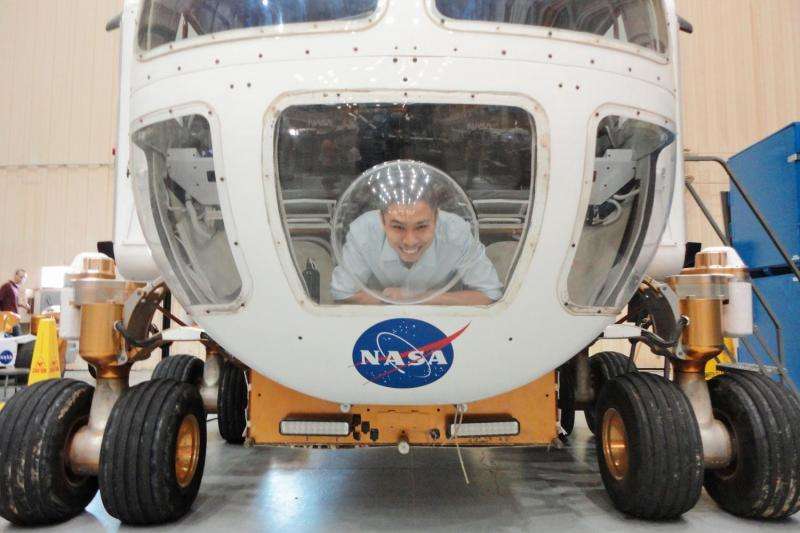Getting real — on Mars

NASA wants you to know that it's only a matter of months before you can wake up in a Martian habitat, grab some breakfast, jump into your spacesuit, and head out for a stroll across the Red Planet's surface. Granted, the experience will be virtual, but it promises be the most realistic vision of human Mars habitation that a team comprising NASA engineers, a digital media developer, and MIT Department of Aeronautics and Astronautics doctoral candidate Sydney Do can generate.
"Mars 2030" is a multiplatform virtual reality (VR) product that features a Mars surface expedition based on actual NASA concepts. To create as authentic an experience as possible, VR developer FUSION partnered with NASA in creating the narrative, user interface, and 3-D assets.
Do caught FUSION's eye as a result of a 2014 paper he co-authored, analyzing and questioning the practicality of "Mars One," a project led by a Dutch nonprofit that hopes to establish a Mars colony by 2025.
"FUSION emailed me, said they'd read the paper, and asked if I'd be a tech advisor for Mars 2030," Do says. "I liked the idea that the experience was to be both educational as well as entertaining, so I agreed to help."
Do described how the Mars 2030 virtual experience will work. "You might wake up in your habitat, get out of bed, and explore your surroundings. You'll pull out a pouch of pre-packaged food for breakfast, walk past a colleague who's working out on an exercise machine, then choose a spacesuit, put it on, and go out to explore Mars on foot or at the controls of your rover."
Do fed the developers relevant studies and papers, gave them names of appropriate NASA contacts and leading experts in Mars exploration and habitats, and vetted their designs.
As part of his consultancy, Do traveled to the Johnson Space Center in Houston with the FUSION team to get a hands-on look at hardware and software NASA is developing for Mars missions. They took a spin at the controls of a prototype rover, although a parking lot had to substitute for the Martian surface. They also visited a virtual reality lab where astronauts are training for planetary strolls.
Do's research in MIT's Strategic Engineering Research Group focuses on technologies and operational strategies for sustaining human life on Mars. "It's basically studying how interdisciplinary design decisions affect sustained presence," he says. "I look at things like life support, habitat architecture, costs, and plant growth systems."
FUSION virtual reality producer and designer Julian Reyes says, "Sydney and his paper's co-author [AeroAstro grad student] Andrew Owens were both integral to the conception of Mars 2030. Their work on the Mars One feasibility study was what gave FUSION the idea for on this project. Their help was invaluable in identifying where we currently are, in terms of technologies and advancements, on getting to Mars."
"With NASA and Sydney's help, our team has created a rendering of the first human explorers on Mars that is as true to reality as the brightest minds know it, enabling users to experience the Red Planet in a highly engaging way," says FUSION Senior Vice President Daniel Eilemberg.
Mars 2030 will be demoed at the SXSW music, film, and interactive festival in Austin this March. The production version will be available to the public later this year, free of charge, via a wide-range of platforms and products including Oculus Rift, Google Cardboard, and Samsung VR Gear via Valve's Steam marketplace and on Fusion.net. It will also be available for iPhone and Android, and on Twitch.
Provided by Massachusetts Institute of Technology
This story is republished courtesy of MIT News (web.mit.edu/newsoffice/), a popular site that covers news about MIT research, innovation and teaching.



















